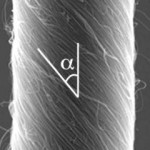Archive for 2011
Kinematic modelling of a robotic gait device for early rehabilitation of walking
- Тип контента: Научная статья
- Номер документа: 3968
- Название документа: Kinematic modelling of a robotic gait device for early rehabilitation of walking
- Номер (DOI, IBSN, Патент): 10.1177/0954411911424976
- Изобретатель/автор: S. Galen, J. Fang, H. Gollee, D. B. Allan, B. A. Conway, A. Vuckovic
- Правопреемник/учебное заведение: Bioengineering Unit, University of Strathclyde, Glasgow, UK
- Дата публикации документа: 2011-10-17
- Страна опубликовавшая документ: Великобритания
- Язык документа: Английский
- Наименование изделия: Не заполнено
- Источник: http://pih.sagepub.com/content/early/2011/10/15/095441191142
- Вложения: Нет
- Аналитик: Helix
 Rehabilitation of walking is an essential element in the treatment of incomplete spinal cord injured (SCI) patients. During the early post injury period, patients find it challenging to practice upright walking. Simulating stepping movements in a supine posture may be easier and promote earlier rehabilitation. A robotic orthotic device for early intervention in spinal cord injury that does not require the patient to be in an upright posture has been modelled. The model comprises a two-bar mechanical system that is configured and powered to provide limb kinematics that approximate normal overground walking. The modelling work has been based on gait analysis performed on healthy subjects walking at 50 per cent, 75 per cent, and 100 per cent of normal cadence. Simulated angles of hip, knee, and ankle joints show a comparable range of motion (ROM) to the experimental walking data measured in healthy subjects. The model provides operating parameters for a prospective recumbent gait orthosis that could be used in early walking rehabilitation of incomplete SCI patients.
Rehabilitation of walking is an essential element in the treatment of incomplete spinal cord injured (SCI) patients. During the early post injury period, patients find it challenging to practice upright walking. Simulating stepping movements in a supine posture may be easier and promote earlier rehabilitation. A robotic orthotic device for early intervention in spinal cord injury that does not require the patient to be in an upright posture has been modelled. The model comprises a two-bar mechanical system that is configured and powered to provide limb kinematics that approximate normal overground walking. The modelling work has been based on gait analysis performed on healthy subjects walking at 50 per cent, 75 per cent, and 100 per cent of normal cadence. Simulated angles of hip, knee, and ankle joints show a comparable range of motion (ROM) to the experimental walking data measured in healthy subjects. The model provides operating parameters for a prospective recumbent gait orthosis that could be used in early walking rehabilitation of incomplete SCI patients.
Категория: Ищем научные статьи | Нет комментариев »
Mina: A Sensorimotor Robotic Orthosis forMobility Assistance
- Тип контента: Научная статья
- Номер документа: 6533
- Название документа: Mina: A Sensorimotor Robotic Orthosis forMobility Assistance
- Номер (DOI, IBSN, Патент): 10.1155/2011/284352
- Изобретатель/автор: Anil K. Raj, Peter D. Neuhaus, AdrienM.Moucheboeuf, Jerryll H. Noorden, DavidV. Lecoutre
- Правопреемник/учебное заведение: Florida Institute for Human and Machine Cognition,
- Дата публикации документа: 2011-10-15
- Страна опубликовавшая документ: США
- Язык документа: Английский
- Наименование изделия: Не заполнено
- Источник: Hindawi Publishing Corporation Journal of Robotics
- Вложения: Да
- Аналитик: Глаголева Елена
 While most mobility options for persons with paraple-gia or paraparesis employ wheeled solutions, significant adverse health, psychological, and social consequ-ences result from wheelchair confinement.Modern robotic exoskeleton devices for gait assistance and rehabilitation, however, can support legged locomotion systems for those with lower extremity weakness or paralysis. The Florida Institute for Human and Machine Cognition (IHMC) has developed the Mina, a proto-type sensorimotor robotic orthosis for mobility assistance that provides mobility capability for paraplegic and paraparetic users. This paper describes the initial concept, design goals, and methods of this wearable overground robotic mobility device, which uses compliant actuation to power the hip and knee joints. Paralyzed users can balance and walk using the device over level terrain with the assistance of forearm crutches employing a quadrupedal gait. We have initiated sensory substitution feedback mechanisms to augment user sensory perception of his or her lower extremities. Using this sensory feedback, we hypo-thesize that users will ambulate with a more natural, upright gait and will be able to directly control the gait parameters and respond to perturbations. This may allow bipedal (with minimal support) gait in fu-ture prototypes.
While most mobility options for persons with paraple-gia or paraparesis employ wheeled solutions, significant adverse health, psychological, and social consequ-ences result from wheelchair confinement.Modern robotic exoskeleton devices for gait assistance and rehabilitation, however, can support legged locomotion systems for those with lower extremity weakness or paralysis. The Florida Institute for Human and Machine Cognition (IHMC) has developed the Mina, a proto-type sensorimotor robotic orthosis for mobility assistance that provides mobility capability for paraplegic and paraparetic users. This paper describes the initial concept, design goals, and methods of this wearable overground robotic mobility device, which uses compliant actuation to power the hip and knee joints. Paralyzed users can balance and walk using the device over level terrain with the assistance of forearm crutches employing a quadrupedal gait. We have initiated sensory substitution feedback mechanisms to augment user sensory perception of his or her lower extremities. Using this sensory feedback, we hypo-thesize that users will ambulate with a more natural, upright gait and will be able to directly control the gait parameters and respond to perturbations. This may allow bipedal (with minimal support) gait in fu-ture prototypes.
Категория: Научные статьи | 2 комментария »
Modeling, Analysis and Simulation of Exoskeleton for a Human Arm
- Тип контента: Научная статья
- Номер документа: 3627
- Название документа: Modeling, Analysis and Simulation of Exoskeleton for a Human Arm
- Номер (DOI, IBSN, Патент): Не заполнено
- Изобретатель/автор: Shreeganesh Sudhindra, Sasi Bhushan Beera
- Правопреемник/учебное заведение: University at Buffalo, Buffalo, NY, USA
- Дата публикации документа: Не заполнено
- Страна опубликовавшая документ: США
- Язык документа: Английский
- Наименование изделия: Не заполнено
- Источник: http://www.slideshare.net/SasiBhushanB/optimization-of-desig
- Вложения: Да
- Аналитик: Дмитрий Соловьев
 For centuries, man has been building machines to serve his needs. With his ability to imagine and his creativity, he was able to nurture his thoughts and give rise to machines that would work for him incessantly and do his bidding. This enabled Man to exert his superiority over other species that roamed the earth. Over the centuries man’s needs have grown increasingly complex and as a consequence so has the level of sophistication of his Machines. The advanced functional capabilities of the human brain enabled man to mimic the features of the other species. One such adaptation is the Amour, an artificial Exoskeleton that Man has used for protection, especially in combat. An Exoskeleton is an external skeleton that supports and protects an animal’s body, for example the Tortoise, in contrast to the internal endoskeleton of, for example, a human. The concept of the Artificial Exoskeleton further evolved through the ages.
For centuries, man has been building machines to serve his needs. With his ability to imagine and his creativity, he was able to nurture his thoughts and give rise to machines that would work for him incessantly and do his bidding. This enabled Man to exert his superiority over other species that roamed the earth. Over the centuries man’s needs have grown increasingly complex and as a consequence so has the level of sophistication of his Machines. The advanced functional capabilities of the human brain enabled man to mimic the features of the other species. One such adaptation is the Amour, an artificial Exoskeleton that Man has used for protection, especially in combat. An Exoskeleton is an external skeleton that supports and protects an animal’s body, for example the Tortoise, in contrast to the internal endoskeleton of, for example, a human. The concept of the Artificial Exoskeleton further evolved through the ages.
Категория: Научные статьи | 3 комментария »
Физики испытали вращающиеся мышцы из нанотрубок
- Тип контента: Новостная статья
- Номер документа: 2241
- Название документа: Физики испытали вращающиеся мышцы из нанотрубок
- Номер (DOI, IBSN, Патент): Не заполнено
- Изобретатель/автор: Не заполнено
- Правопреемник/учебное заведение: Не заполнено
- Дата публикации документа: 2011-10-14
- Страна опубликовавшая документ: Россия
- Язык документа: Русский
- Наименование изделия: Не заполнено
- Источник: http://www.membrana.ru/particle/16943
- Вложения: Не заполнено
- Аналитик: Ридна Украина)))
 Нити из нанотрубок развивают колоссальное для своего размера и веса усилие, говорят учёные. В проведённом недавно опыте одна такая нить за секунду разогнала до нескольких оборотов в секунду лопасти, которые были на два порядка тяжелее и крупнее её.
Нити из нанотрубок развивают колоссальное для своего размера и веса усилие, говорят учёные. В проведённом недавно опыте одна такая нить за секунду разогнала до нескольких оборотов в секунду лопасти, которые были на два порядка тяжелее и крупнее её.
Категория: Двигатели | Нет комментариев »
Portable load lifting system
- Тип контента: Патент
- Номер документа: 4397
- Название документа: Portable load lifting system
- Номер (DOI, IBSN, Патент): WO2011/127471A1
- Изобретатель/автор: Angold R.
- Правопреемник/учебное заведение: Lockheed Martin Corporation, USA
- Дата публикации документа: 2011-10-13
- Страна опубликовавшая документ: США
- Язык документа: Английский
- Наименование изделия: Не заполнено
- Источник: http://www.wipo.int/patentscope/search/en/WO2011127471
- Вложения: Да
- Аналитик: Дмитрий Соловьев
 A portable load lifting assist system (100) includes a movable support structure including an exoskeleton torso (160) including an exoskeleton trunk (109) that is configured to be coupled to a person’s upper body, and a load lifting mechanism (221) secured to the movable support structure including a winch (229) having a motor driven reel mechanism for reeling first and second lifting straps or cables (222) that are secured to first and second end effectors (223). First and second handles (224) are attached to an outside surface of the first and second end effectors, wherein the lifting straps or cables when driven by the winch lift a load contacted by the first and second end effectors. A lower extremity exoskeleton (120) is configured to be coupled to a person’s lower limbs. The exoskeleton trunk couples to the person’s upper body through an upper body interface device (150(a)) that is coupled to the lower extremity exoskeleton.
A portable load lifting assist system (100) includes a movable support structure including an exoskeleton torso (160) including an exoskeleton trunk (109) that is configured to be coupled to a person’s upper body, and a load lifting mechanism (221) secured to the movable support structure including a winch (229) having a motor driven reel mechanism for reeling first and second lifting straps or cables (222) that are secured to first and second end effectors (223). First and second handles (224) are attached to an outside surface of the first and second end effectors, wherein the lifting straps or cables when driven by the winch lift a load contacted by the first and second end effectors. A lower extremity exoskeleton (120) is configured to be coupled to a person’s lower limbs. The exoskeleton trunk couples to the person’s upper body through an upper body interface device (150(a)) that is coupled to the lower extremity exoskeleton.
Категория: Патенты | Нет комментариев »
Статистика
Категорий: 179
Статей всего: 2,003
По типу:
Видео: 36
Выдержка с форума: 1
Контактные данные: 12
Научная статья: 1388
Не заполнено: 5
Новостная статья: 317
Обзор технологии: 42
Патент: 219
Тех.подробности: 34
Тип: 1
Комментариев: 9,066
Изображений: 3,005
Подробней...
ТОР 10 аналитиков
-
Глаголева Елена - 591
Дмитрий Соловьев - 459
Helix - 218
Ридна Украина))) - 85
Наталья Черкасова - 81
max-orduan - 29
Елена Токай - 15
Роман Михайлов - 9
Мансур Жигануров - 4
Дуванова Татьяна - 3
Календарь
| Пн | Вт | Ср | Чт | Пт | Сб | Вс |
|---|---|---|---|---|---|---|
| « Ноя | ||||||
| 1 | 2 | 3 | 4 | 5 | 6 | 7 |
| 8 | 9 | 10 | 11 | 12 | 13 | 14 |
| 15 | 16 | 17 | 18 | 19 | 20 | 21 |
| 22 | 23 | 24 | 25 | 26 | 27 | 28 |
| 29 | 30 | 31 | ||||
Авторизация
Ошибка в тексте?
Выдели её мышкой!
И нажми Ctrl+Enter